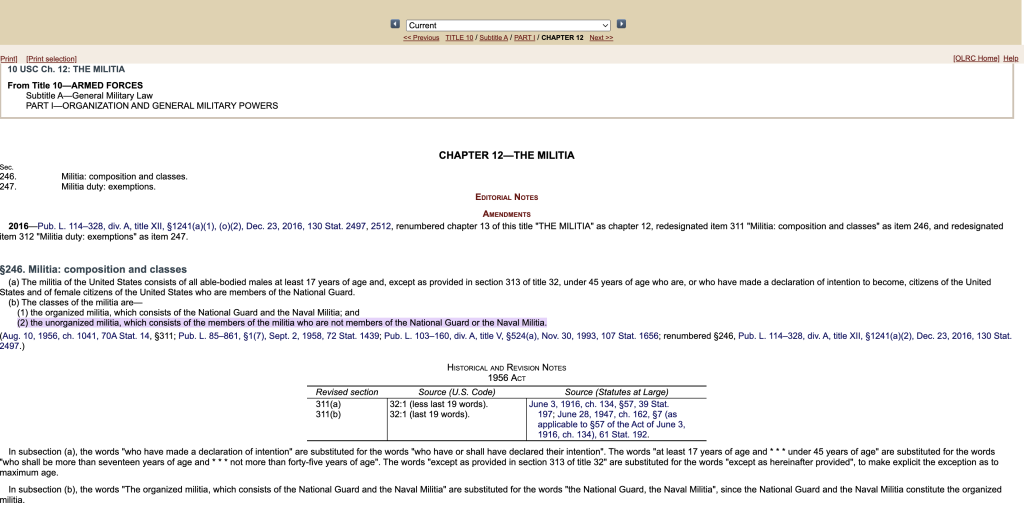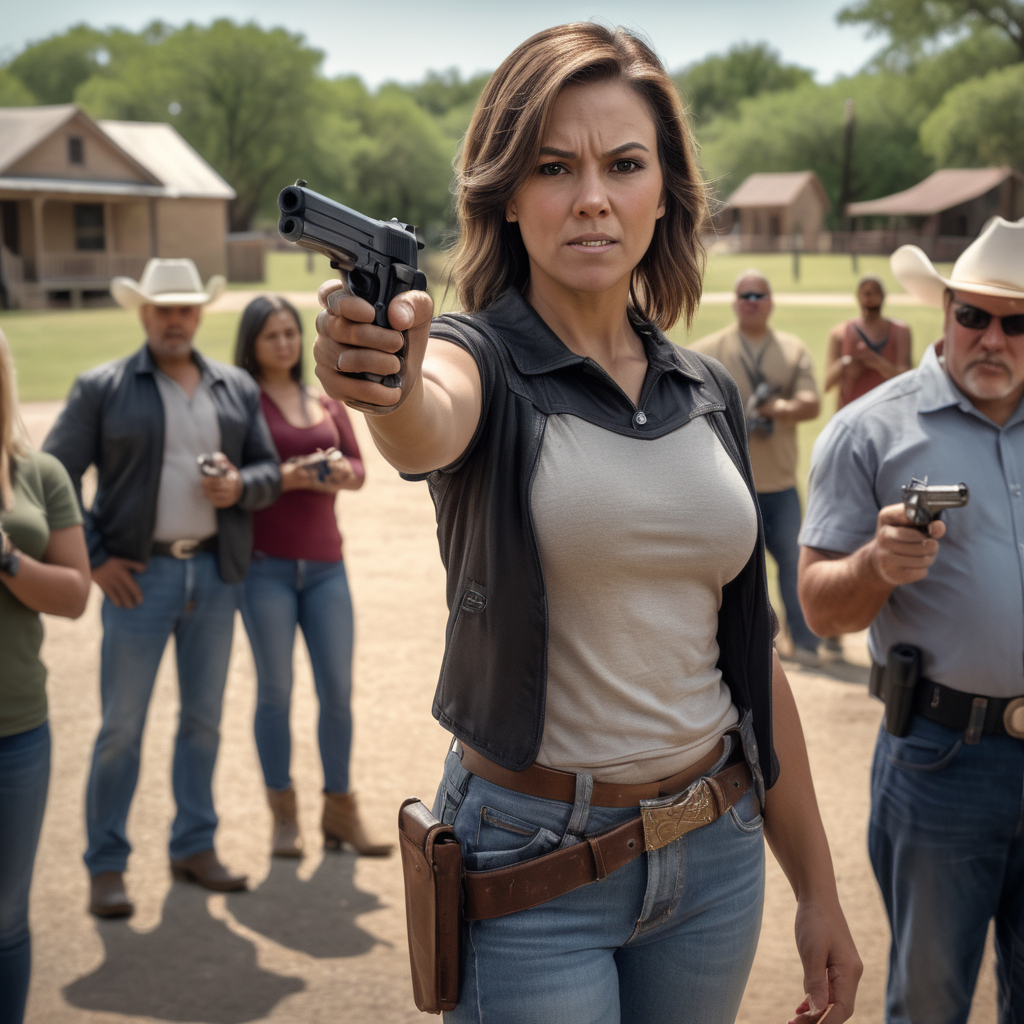In the United States, the concept of an unorganized militia has deep roots, dating back to the early days of the nation. The unorganized militia is a group of citizens who are not part of a formal, organized militia but are willing and able to defend their country in times of crisis. This article will explore the concept of the unorganized militia, its historical significance, and how to best organize while remaining unorganized, focusing on preparing and training for increasing skill of the individuals that need to prep and ready for threats foreign and domestic.
The Second Amendment to the United States Constitution is often cited as the basis for the concept of an unorganized militia. The full text of the amendment reads: “A well regulated Militia, being necessary to the security of a free State, the right of the people to keep and bear Arms, shall not be infringed.” While the exact meaning and interpretation of this amendment have been debated, it is widely understood to protect the right of citizens to possess and carry firearms, as well as the potential for those citizens to form militias for the defense of their communities and the nation.

The Historical Significance of the Unorganized Militia
The concept of an unorganized militia dates back to the early days of the United States. The Second Amendment to the U.S. Constitution states: “A well-regulated Militia, being necessary to the security of a free State, the right of the people to keep and bear Arms, shall not be infringed.” This amendment reflects the belief of the Founding Fathers that a militia, composed of ordinary citizens, was essential to the security and freedom of the nation.
During the Revolutionary War, the unorganized militia played a crucial role in the fight for independence. Local militias, often composed of farmers, tradesmen, and other ordinary citizens, banded together to protect their communities from British forces. These unorganized militias were able to mobilize quickly and effectively, providing a formidable resistance to British troops.
The unorganized militia also played a significant role in the early years of the United States. In the absence of a standing army, the militias were often called upon to defend the country from foreign threats and to maintain domestic order. The unorganized militia was considered an essential component of the nation’s defense, and the right to bear arms was seen as a fundamental right of every citizen.
The Need for an Unorganized Militia in the Modern Era
While the role of the unorganized militia has evolved over time, the need for citizens to be prepared to defend their country and their communities remains as relevant today as it was during the nation’s founding. In an increasingly unpredictable world, threats to national security, both foreign and domestic, continue to emerge. The unorganized militia serves as a safeguard against these threats, providing a means for citizens to protect their communities and their country in times of crisis.
Preparing and Training for the Unorganized Militia
In order to be effective, the unorganized militia must be prepared and trained to respond to a wide range of potential threats. This preparation and training should focus on increasing the skills and capabilities of individual members, allowing them to effectively defend their communities and their country when called upon to do so.
- Physical Fitness and Endurance
The first step in preparing for the unorganized militia is to develop and maintain a high level of physical fitness and endurance. Members of the militia must be able to perform physically demanding tasks, such as carrying heavy loads, traversing difficult terrain, and engaging in sustained physical activity. A regular exercise routine, incorporating strength training, cardiovascular conditioning, and flexibility exercises, is essential for maintaining the physical fitness required for effective militia service.
- Marksmanship and Firearms Proficiency
Firearms proficiency is a critical skill for members of the unorganized militia. Members should be familiar with a variety of firearms, including pistols, rifles, and shotguns, and should be proficient in their use. This includes understanding the basic principles of marksmanship, such as sight alignment, trigger control, and breath control, as well as the safe handling and storage of firearms.
- Tactical Training and Strategy
In addition to marksmanship and firearms proficiency, members of the unorganized militia should also receive training in tactical skills and strategy. This includes understanding the principles of cover and concealment, movement techniques, and the use of suppressive fire. Members should also be familiar with basic squad tactics, such as fire and movement, bounding overwatch, and defensive positions.
- First Aid and Medical Training
In the event of a crisis, members of the unorganized militia may be called upon to provide medical care to injured civilians or fellow militia members. Basic first aid and medical training, including knowledge of how to treat common injuries, such as gunshot wounds, lacerations, and fractures, is essential for effective militia service.
- Communications and Intelligence Gathering
Effective communication is crucial for the success of any military operation, and the unorganized militia is no exception. Members should be familiar with a variety of communication methods, including radios, signal mirrors, and hand signals. Additionally, members should be trained in basic intelligence gathering techniques, such as observation, reconnaissance, and the use of unmanned aerial vehicles (drones).
- Survival Skills and Self-Reliance
In the event of a crisis, members of the unorganized militia may find themselves in situations where they must rely on their own resources and skills to survive. Basic survival skills, such as shelter building, fire starting, and water purification, are essential for members to be able to operate effectively in the field.
- Networking and Collaboration
While the unorganized militia is, by definition, not a formal organization, networking and collaboration among members is essential for the group’s success. Members should actively seek out and maintain connections with other like-minded individuals, sharing information, resources, and training opportunities. This networking can help to build a strong sense of community and mutual support, which is essential for the success of the unorganized militia.
Organizing the Unorganized Militia
While the unorganized militia is not a formal organization, some level of organization is necessary to ensure the group’s effectiveness. This organization should focus on facilitating communication, collaboration, and training among members, while avoiding the pitfalls of a formal hierarchy and bureaucracy.
- Establish a Communication Network
A reliable and secure communication network is essential for the unorganized militia to function effectively. This network should be designed to allow members to communicate with one another quickly and efficiently, using a variety of methods, such as email, social media, and encrypted messaging apps.
- Develop a Training Calendar
Regular training is essential for maintaining the skills and capabilities of members of the unorganized militia. A training calendar should be developed, outlining the various training opportunities available to members, such as firearms proficiency courses, tactical training seminars, and medical training workshops. Members should be encouraged to participate in these training opportunities and to share their knowledge and skills with other members.
- Establish Local and Regional Groups
While the unorganized militia is a national concept, its effectiveness is often determined at the local and regional levels. Members should be encouraged to form local and regional groups, allowing for more frequent training, collaboration, and networking opportunities. These groups should be designed to support the unique needs and challenges of their respective communities.
- Develop a Resource Sharing Network
In the event of a crisis, members of the unorganized militia may need to rely on one another for support and resources. A resource sharing network should be established, allowing members to share information about available resources, such as firearms, ammunition, medical supplies, and transportation. This network should be designed to facilitate the rapid mobilization of resources in times of crisis.
- Encourage Individual Autonomy
While some level of organization is necessary for the unorganized militia to function effectively, it is essential to maintain the individual autonomy that is at the heart of the concept. Members should be encouraged to think for themselves, to make their own decisions, and to act in the best interests of their communities and their country.
The unorganized militia is a vital component of the United States’ national security, providing a means for citizens to defend their communities and their country in times of crisis. By focusing on preparing and training for increasing skill of the individuals that need to prep and ready for threats foreign and domestic, the unorganized militia can remain a powerful force for good, ensuring the continued security and freedom of the nation.
References
- The Second Amendment to the U.S. Constitution. (2019). National Archives. Retrieved fromhttps://www.archives.gov/founding-docs/bill-of-rights-transcript
- The Revolutionary War and America’s First Veterans. (2017). U.S. Department of Veterans Affairs. Retrieved fromhttps://www.va.gov/opa/publications/celebrate/revolutionary-war.pdf
- The National Guard: A Brief History of the Militia. (2019). National Guard Bureau. Retrieved fromhttps://www.nationalguard.mil/aboutus/history/
- The Right to Keep and Bear Arms. (2019). The Heritage Foundation. Retrieved fromhttps://www.heritage.org/constitution/#!/amendments/2/essays/141/the-right-to-keep-and-bear-arms
- Physical Fitness and Military Performance. (2012). U.S. Army Center for Health Promotion and Preventive Medicine. Retrieved fromhttps://chppm-www.apgea.army.mil/LinkClick.aspx?fileticket=7qA6U6hWzMU%3d&tabid=7720
- Marksmanship Fundamentals. (2017). U.S. Army Training and Doctrine Command. Retrieved fromhttps://www.army.mil/standto/archive_2017-05-23/
- Basic Survival Skills for Emergencies. (2020). American Red Cross. Retrieved fromhttps://www.redcross.org/get-help/how-to-prepare-for-emergencies/survival-skills.html
- Networking for Success: Building Strong Connections. (2018). Harvard Business Review. Retrieved fromhttps://hbr.org/2018/05/networking-for-success-building-strong-connections
- USC Unorganized Militia References: https://uscode.house.gov/view.xhtml?path=/prelim@title10/subtitleA/part1/chapter12&edition=prelim#:~:text=(2)%20the%20unorganized%20militia%2C,Guard%20or%20the%20Naval%20Militia.

